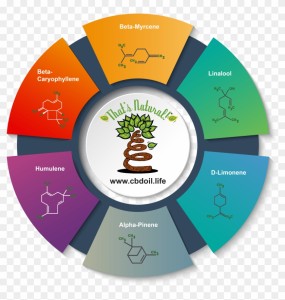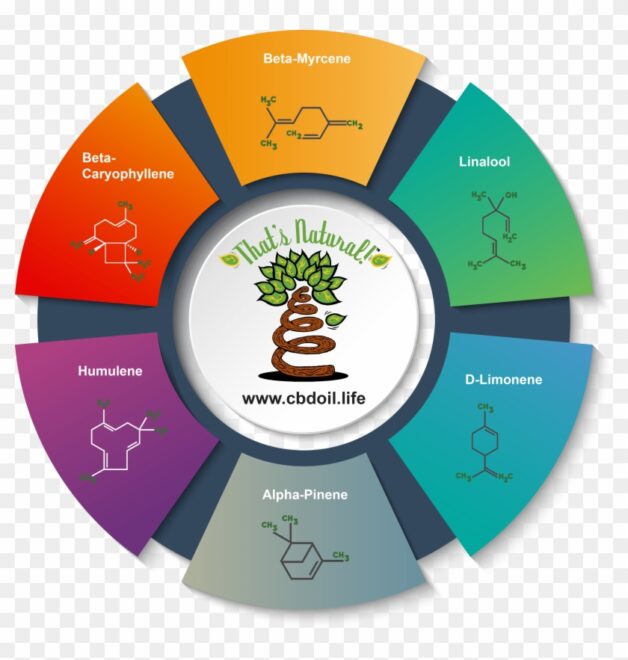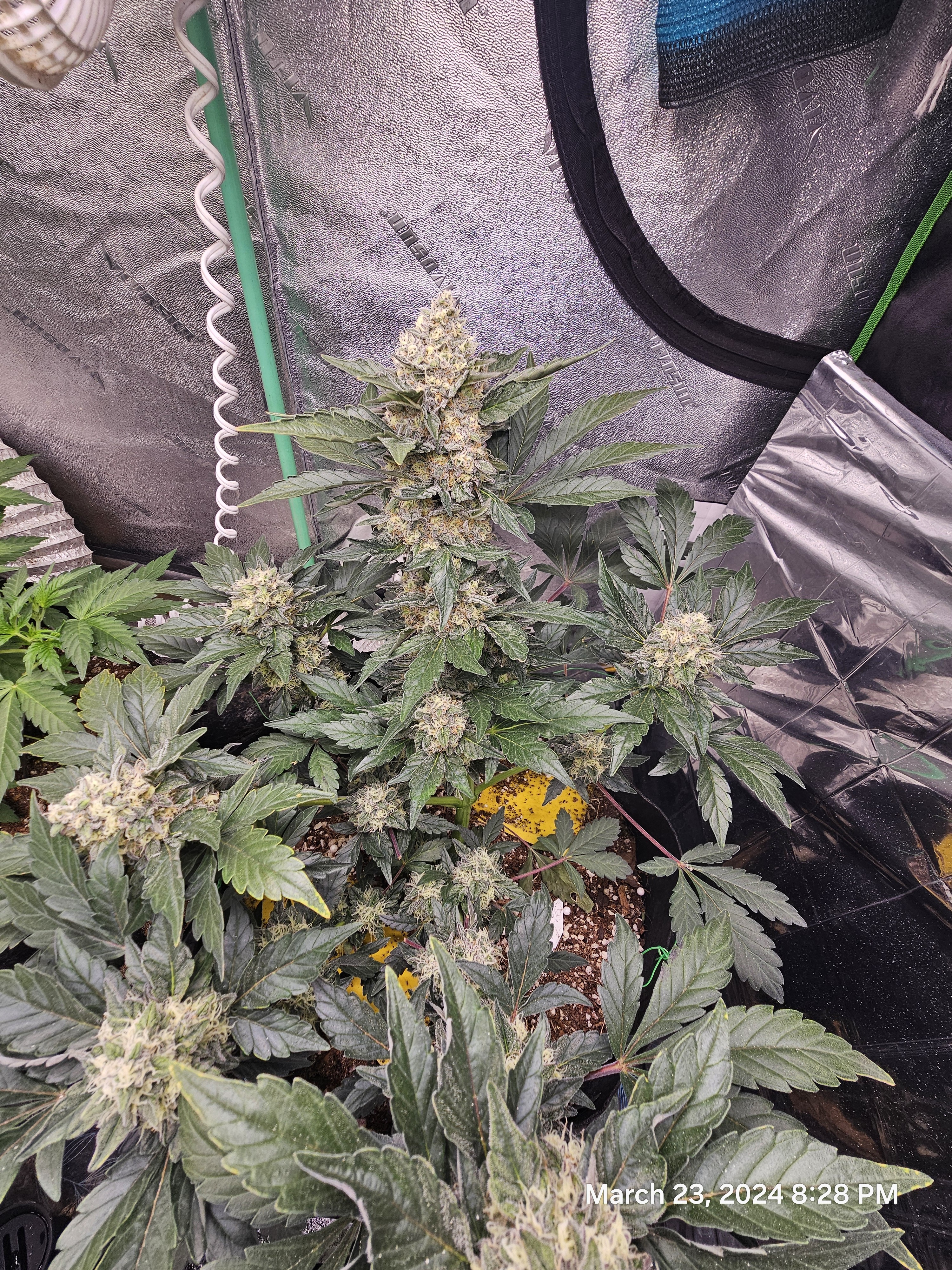The Role of Terpenes in Enhancing the Effects of Cannabinoids

Terpenes and their relationship to cannabinoids have been a topic of interest in the field of cannabis research. These organic compounds are found in various plants, including cannabis, and are responsible for the distinct aromas and flavors associated with different strains. While cannabinoids like THC and CBD have garnered much attention for their therapeutic properties, terpenes have also been found to play a crucial role in enhancing the effects of cannabinoids.
Terpenes are a diverse group of compounds that are synthesized in the trichomes of cannabis plants. These trichomes are tiny, hair-like structures that cover the surface of the plant, and they are responsible for producing cannabinoids and terpenes. Over 100 different terpenes have been identified in cannabis, each with its own unique aroma and potential therapeutic benefits.
One of the ways terpenes enhance the effects of cannabinoids is through the entourage effect. This phenomenon refers to the synergistic interaction between cannabinoids and terpenes, which can result in a more potent and effective therapeutic experience. For example, the terpene myrcene has been found to enhance the sedative effects of THC, making strains high in myrcene more suitable for relaxation and sleep.
In addition to the entourage effect, terpenes also have their own therapeutic properties. For instance, the terpene limonene, which is commonly found in citrus fruits, has been shown to have anti-anxiety and mood-enhancing effects. When combined with CBD, which also has anxiolytic properties, the effects of both compounds may be amplified, providing greater relief for individuals suffering from anxiety disorders.
Furthermore, terpenes can also influence the way cannabinoids are absorbed and metabolized by the body. Some terpenes, such as beta-caryophyllene, have been found to interact with the body’s endocannabinoid system, specifically the CB2 receptors. This interaction can potentially enhance the therapeutic effects of cannabinoids by increasing their bioavailability and prolonging their duration of action.
The relationship between terpenes and cannabinoids is not limited to their therapeutic effects. Terpenes also contribute to the overall sensory experience of consuming cannabis. The distinct aromas and flavors associated with different strains are largely due to the presence of specific terpenes. For example, the terpene pinene is responsible for the pine-like scent found in some strains, while the terpene linalool gives off a floral aroma reminiscent of lavender.
Understanding the relationship between terpenes and cannabinoids is crucial for both medical and recreational cannabis users. By selecting strains high in specific terpenes, individuals can tailor their cannabis experience to suit their needs. For example, someone seeking pain relief may opt for a strain high in the terpene beta-caryophyllene, which has been shown to have analgesic properties.
In conclusion, terpenes play a significant role in enhancing the effects of cannabinoids. Through the entourage effect, terpenes can synergistically interact with cannabinoids, resulting in a more potent therapeutic experience. Additionally, terpenes have their own therapeutic properties and can influence the absorption and metabolism of cannabinoids in the body. Furthermore, terpenes contribute to the sensory experience of consuming cannabis, adding to the overall enjoyment and customization of the cannabis experience. As research in this field continues to expand, a deeper understanding of the relationship between terpenes and cannabinoids will undoubtedly lead to more targeted and effective cannabis-based therapies.
Exploring the Synergistic Effects of Terpenes and Cannabinoids
Terpenes and cannabinoids are two compounds found in the cannabis plant that have gained significant attention in recent years. While cannabinoids, such as THC and CBD, have been extensively studied for their therapeutic properties, terpenes have often been overlooked. However, emerging research suggests that terpenes play a crucial role in enhancing the effects of cannabinoids, creating what is known as the entourage effect.
Terpenes are aromatic compounds that give cannabis its distinct smell and flavor. They are not unique to cannabis and can be found in various plants, including fruits, herbs, and flowers. Over 200 different terpenes have been identified in cannabis, each with its own unique properties and potential health benefits.
One of the most well-known terpenes found in cannabis is myrcene. This terpene is also found in hops, which gives beer its characteristic aroma. Myrcene has been found to have sedative effects and is believed to contribute to the relaxing properties of certain cannabis strains. When combined with cannabinoids, such as THC, myrcene may enhance the sedative effects, making it an ideal choice for those seeking relaxation and sleep aid.
Another terpene that has gained attention is limonene. As the name suggests, limonene is responsible for the citrusy aroma found in some cannabis strains. Research has shown that limonene has anti-inflammatory and anti-anxiety properties. When combined with CBD, limonene may enhance the anti-anxiety effects, making it a potential treatment option for those suffering from anxiety disorders.
Pinene is another terpene commonly found in cannabis. As the name suggests, pinene has a pine-like aroma and is also found in pine trees. Pinene has been found to have anti-inflammatory and bronchodilator properties. When combined with THC, pinene may enhance the bronchodilator effects, making it a potential treatment option for those suffering from respiratory conditions, such as asthma.
These are just a few examples of the many terpenes found in cannabis and their potential synergistic effects with cannabinoids. The entourage effect refers to the idea that the combination of cannabinoids and terpenes work together to produce a more significant therapeutic effect than when used individually. This concept challenges the traditional view that the effects of cannabis are solely due to the cannabinoids present.
Understanding the relationship between terpenes and cannabinoids is crucial for maximizing the therapeutic potential of cannabis. By selecting strains with specific terpene profiles, individuals can tailor their cannabis experience to their desired effects. For example, someone seeking pain relief may opt for a strain high in myrcene, while someone looking for an energy boost may choose a strain high in limonene.
In conclusion, terpenes play a vital role in the therapeutic effects of cannabis. They not only contribute to the aroma and flavor of cannabis but also enhance the effects of cannabinoids through the entourage effect. As research in this area continues to expand, it is becoming increasingly clear that terpenes should not be overlooked when considering the potential benefits of cannabis. By understanding the relationship between terpenes and cannabinoids, individuals can make more informed choices when selecting cannabis strains for their specific needs.
Understanding the Therapeutic Potential of Terpenes in Combination with Cannabinoids
Terpenes and cannabinoids are two compounds found in the cannabis plant that have gained significant attention in recent years due to their potential therapeutic benefits. While cannabinoids, such as THC and CBD, have been extensively studied for their medicinal properties, terpenes have often been overlooked. However, emerging research suggests that terpenes play a crucial role in enhancing the therapeutic potential of cannabinoids.
Terpenes are aromatic compounds that give cannabis its distinct smell and flavor. They are also found in various other plants, such as lavender, citrus fruits, and pine trees. Over 200 different terpenes have been identified in cannabis, each with its own unique properties and potential health benefits.
One of the most intriguing aspects of terpenes is their ability to interact with cannabinoids. Research has shown that terpenes can modulate the effects of cannabinoids by influencing their binding to receptors in the endocannabinoid system. This interaction is known as the entourage effect, where the combined action of cannabinoids and terpenes produces a more significant therapeutic effect than either compound alone.
For example, the terpene myrcene, which is commonly found in cannabis, has been shown to enhance the sedative effects of THC. This means that strains of cannabis with high levels of myrcene may have a more pronounced relaxing and calming effect. On the other hand, the terpene limonene has been found to have uplifting and mood-enhancing properties, potentially counteracting the sedative effects of THC.
In addition to modulating the effects of cannabinoids, terpenes also have their own therapeutic properties. For instance, the terpene linalool, which is found in lavender, has been shown to have anti-anxiety and sedative effects. When combined with CBD, which also has anxiolytic properties, the synergistic effect of linalool and CBD may provide even greater relief for individuals suffering from anxiety disorders.
Furthermore, terpenes have been found to have anti-inflammatory, analgesic, and antioxidant properties. The terpene beta-caryophyllene, for example, has been shown to have potent anti-inflammatory effects by selectively activating the CB2 receptors in the endocannabinoid system. This makes it a promising compound for the treatment of conditions such as arthritis and inflammatory bowel disease.
Understanding the therapeutic potential of terpenes in combination with cannabinoids is crucial for the development of effective cannabis-based medicines. By harnessing the synergistic effects of these compounds, researchers and healthcare professionals can tailor treatments to target specific symptoms and conditions.
However, it is important to note that the effects of terpenes can vary depending on their concentration and the presence of other compounds in the cannabis plant. This is why the concept of strain specificity has become increasingly important in the medical cannabis industry. Different strains of cannabis can have varying levels of cannabinoids and terpenes, resulting in different therapeutic effects.
In conclusion, terpenes play a vital role in enhancing the therapeutic potential of cannabinoids. Their ability to modulate the effects of cannabinoids and their own therapeutic properties make them valuable compounds in the development of cannabis-based medicines. Further research is needed to fully understand the complex interactions between terpenes and cannabinoids and to unlock their full therapeutic potential.












